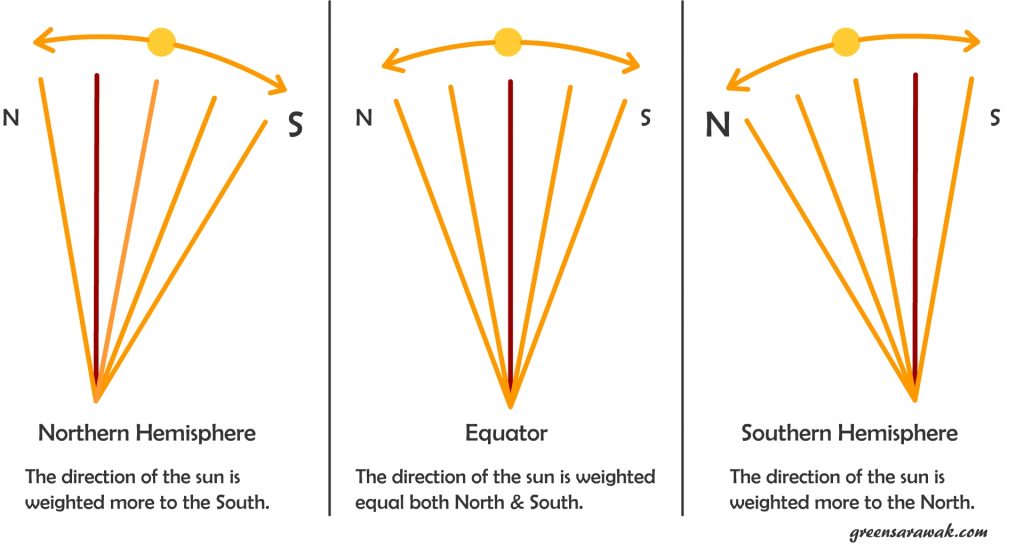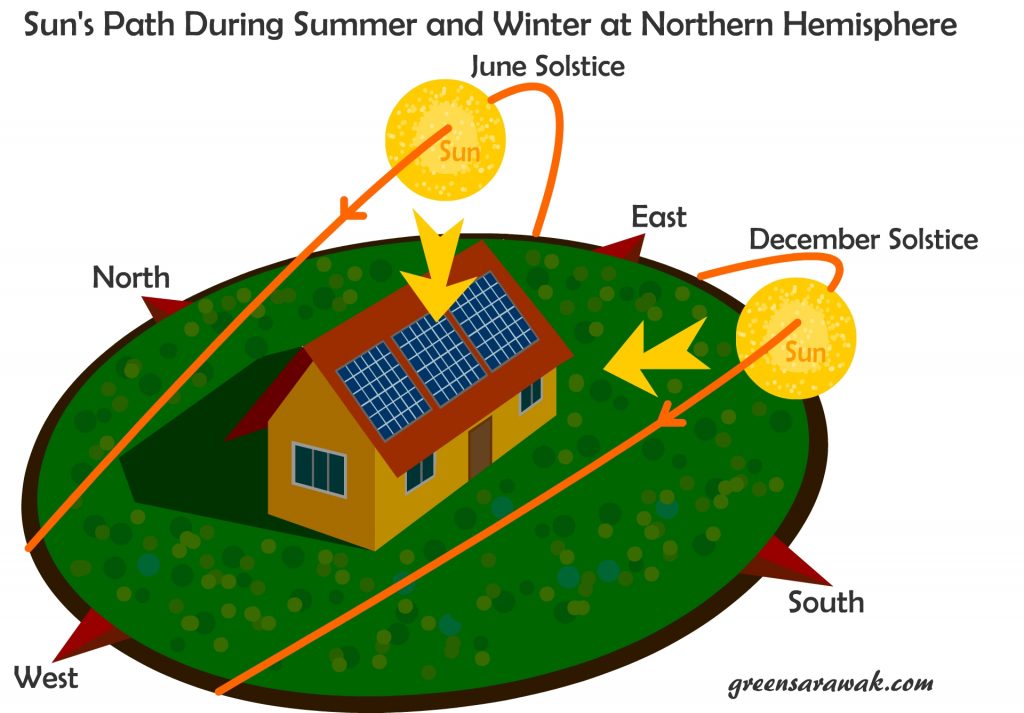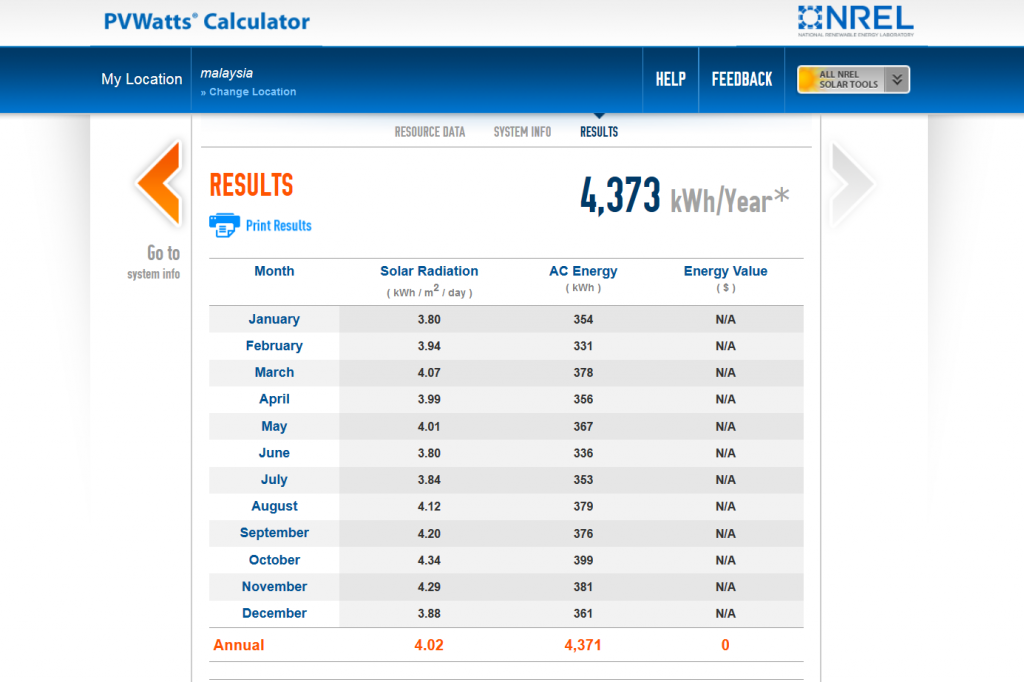Must all Solar PV panels face south ?
Most of the online article do mention about fixed solar PV must face South for most efficient solar power generation, but such statement comes with a cache, it only applies to those live at Northern Hemisphere. It is noted that most country with widespread solar PV installations are from the Northern Hemisphere, such as China, Europe, Germany and United States.

In Northern Hemisphere, it is beneficial to have your fixed solar PV facing true south as most of path of the sun is weighted towards the south. The Southern Hemisphere will need to have their fixed solar PV facing true North instead. In other words, face your solar PV panels towards the Equator.
How to know the sun path throughout the years
The sun’s path are not the same throughout the years due to the fact that the earth is tilted on a rotational axis. In certain months the sun appears to cross on the south side, while at certain months it appears center or even cross on the north side. Hence it is important to know the sun path for maximum solar gain.
Luckily there is a fix routine on where the sun should appears (rise) , cross and disappears (set). The routine is repeated every year with same pattern. It is important that the calculation is based on true north (based on rotational axis of earth – as evident in most maps, and coordinates) in stead of magnetic north (as seen in compass).

True north is not the same as magnetic north. Hence if you are using a compass to orient your panels, you need to correct for the difference, which varies from place to place due to Magnetic declination. A better alternative is using a GPS and Sun Calculator. Sun direction calculator can be found online and various mobile apps.
One of example is http://suncalc.net.

With the sun calculator, you can pin point your location on a map and adjust the date and time forward or backward. The important date to inquiry is 20 March (Equinox), 20-21 June (Northern Solstice), 22-23 September (Equinox) and 21-22 December (Southern Solstice). You will find the average direction and path of the sun to decide the where you should face your solar PV panels.
Other Directions
What if you don’t have opportunity to have a south and west facing panels ? Don’t worry, Others direction such as east and west is possible as long as you can get a good hold of the sunlight directly.
Recent study also suggest that there is benefit of west facing solar PV panels. A study of 110,000 California houses, vast majority of the panels were pointed south as to maximizes over all power production, but peak production comes at midday, not in late afternoon, when it would be peak demand for household from 4pm onward.
In some cases if you have a roof that have one side facing west and the other facing east, you can have two independent systems covering each of the rooftop. The East facing panels will be in full power generation in the morning, while the West facing panels will be in full power generation in the evening. This two peaks will offsets the lack of power generation of a misaligned panels.
Other factors such as local cloud formation and weather also plays an important role in deciding which direction you should face your solar PV panels. If you have cloudy mornings more often, it is beneficial for your solar PV panels to face westwards (to collect more suns during afternoon). Similarly if you have cloudy afternoons more often, the east facing (morning suns) will be better option. Hence it is also important to look for local weather pattern.
You can use NREL’s PVWatts tool to calculate your estimated PV output based on the direction of your solar PV panels and the local solar radiation data.

NEXT CHAPTER >> Know Your Sun Hours
